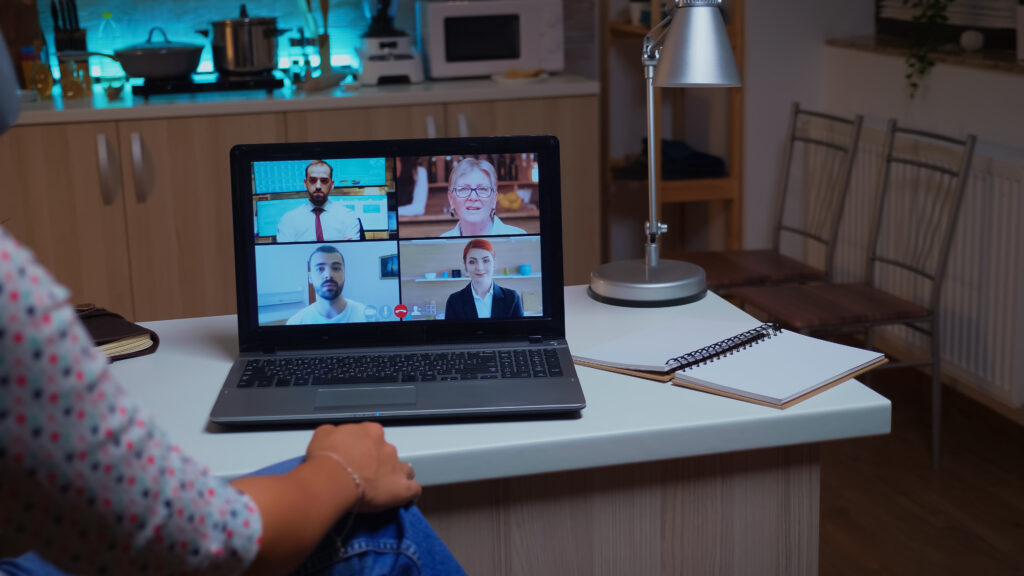How to keep work productive when your business operates remotely | 5 best practices to implement when managing your work from home teams

Have you just begun hiring remote workers for your startup, but now wondering what the dynamic’s going to be like managing a bunch of people you might not recognise if you passed them in the street?
Remote working offers all kinds of advantages to businesses, but there’s no denying it can be a bit daunting, whether you’re starting out remote, or switching over to remote. Fortunately, we’ve been working remotely for more than 10-years, and we’ve got 5 best practices to follow for managing your remote teams efficiently (or rather, teaching your remote teams how best to manage themselves).
1. Park everything you know about working on-site and be prepared to learn as you go
Shifting to remote work requires a mindset adjustment.
It’s important to embrace the change, and be open to learning new ways of working. Remote work demands flexibility, adaptability, and continuous improvement, so stay receptive to evolving ideas and best practices.
2. Encourage your employees to have a dedicated workspace
During the hiring process, you should have a discussion with serious candidates on the importance of a dedicated workspace. Now, this sounds simple, and it is simple, but you need to be careful not to overstep.
One of the greatest advantages to businesses in the work from home approach is that every employee can, in theory, work in an environment that’s more conducive to productivity. No being distracted by louder colleagues, fire drills, or getting sucked into water cooler chat. They can optimise their desk and workspace to their precise preferences. And the key word is “their.”
You need to respect employees’ personal spaces by making it a collaborative conversation rather than trying to impose arbitrary standards. You need to educate them on best practices and give them options to facilitate these, but respect that it’s ultimately their domain.
Pro tip: You could create a gamified course on work-from-home best practices. This could posit multiple scenarios and actually demonstrate why they’re so widely adopted, and what blockers and issues they overcome.
3. Invest in appropriate software to allow agile working and collaboration
You should invest in suitable software and appropriate digital tools that support agile working. Working remotely, you can’t quickly book out the conference room or head over to a superior’s office to get their input, but you can have video meetings with as many colleagues as could fill out an assembly hall, all edit and collaborate on live documents and graphic assets simultaneously, and you can reach one another through instant messaging services at a pace second only to telepathy.
With the right digital tools and systems in place, it’s actually more efficient working remotely.
4. Use gamification to create culture and community in the virtual space
Believe it or not, people want to do more with their job than just clock in, crack on, and clock out. What I just described is the bare minimum, but it’s a disposable sounding way to make a living. Yes, salary and benefits top the typical employee’s hierarchy of needs, but don’t underestimate the value of a positive company culture.
Positive onsite work cultures are extremely hard to replicate if you then switch to a remote working pattern. A lot of face-to-face interaction and accompanying banter, a lunch-time run club, a regular quiz, office Olympics, and numerous other after work activities are incredibly easy to facilitate when everyone congregates at a specific building.
When you move to the work from home model, gamification, the application of game elements to everyday activities to enhance user engagement, should be the go-to digital strategy to try and replicate that culture.
At the most basic level, things like fantasy sports leagues around football, American football, and even the Olympics or the Tour de France could create some interwork craic among sports fans, and you could even create a work club on Strava and set challenges for the runners and cyclists in your office.
Gamify at the pro level by being inclusive: Realistically, not everyone in your virtual office are going to be sports fans and recreational athletes, and creating a positive work culture, however far apart you may all be, means being inclusive, and involving everyone.
Using gamification platforms like Drimify, you can easily create Quizzes and mini-games to distribute to your teams to give them chances to win prizes, climb leaderboards, solve virtual escape rooms and treasure hunts, and generally spice up some office banter with interactivity and competition.
The desire to play is universal, so it follows that thoughtful gamification is the key to cultivating a harmonious remote working culture.
5. Introduce a daily stand-up to promote accountability and self-management
Implement daily stand-ups, either through your digital solutions, so everyone can say, “Here’s what I achieved yesterday, here’s what I’m going to do today, and here are potential blockers.” It gives you, as the leader or business owner, a glance at what people are doing, and facilitates trust and autonomy (or self management).
You can also schedule regular one-on-ones, or even regular team meetings. These short, regular check-ins allow team members to share progress, concerns, discuss challenges, and further align their efforts.
If your people manage themselves and get on with their work loads, it gives you a lot less to do. Management should only ever be directive and corrective. Trying to micromanage is unproductive: it wastes your time, frustrates employees, and seldom leads to people producing their best work.
Key takeaway

Whether you’re starting out the block as a remote-first company, or you’re moving to a 100% remote working pattern, you’re going to encounter some challenges, and you’re going to have to make some mindset adjustments.
Culturally, most of what we know, or think we know about what work is and how businesses operate is based on sharing the same roof and carpet with a group of other humans. While working from home isn’t an entirely new approach, it has now become the widely adopted standard where it isn’t a necessity to be onsite.
The 5 actions listed here are easy to implement, and can be adapted to any business or business function where employees aren’t required to be in a specific place to effectively do their job.


















































































































































































